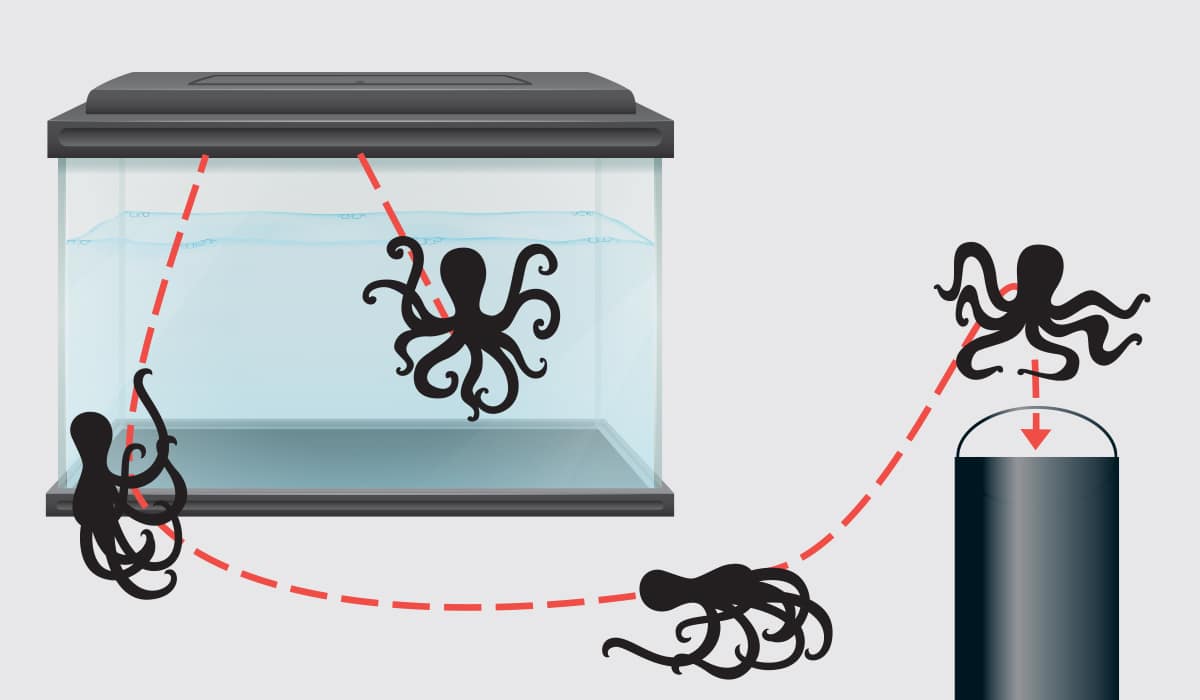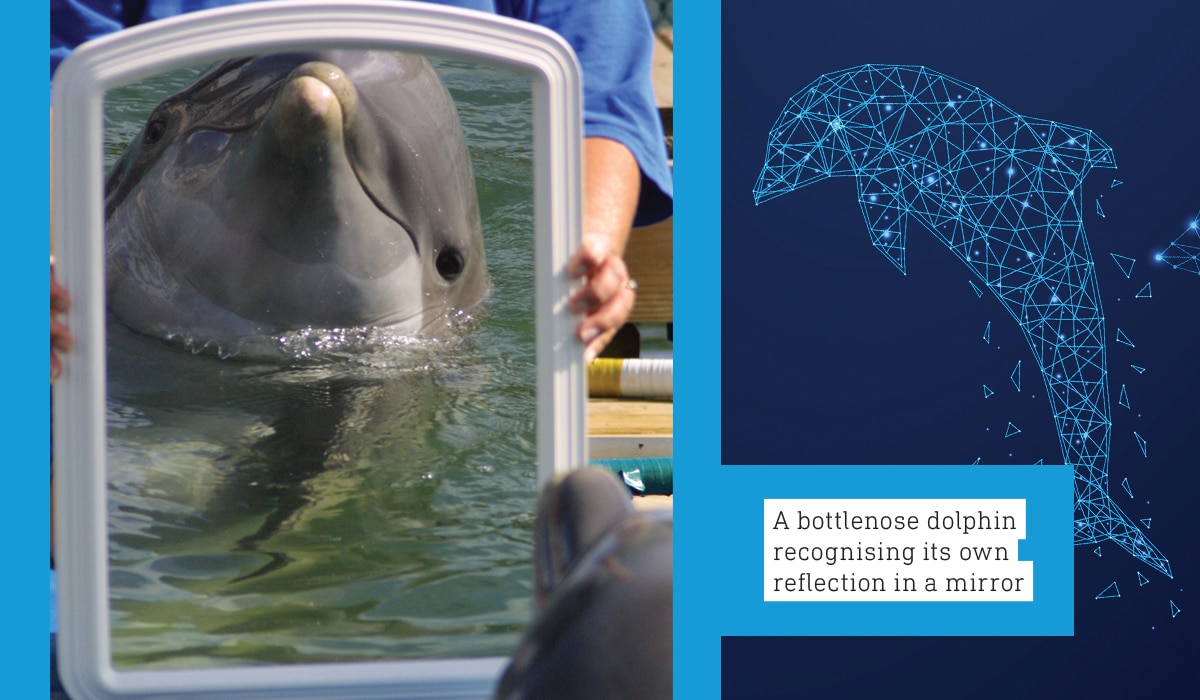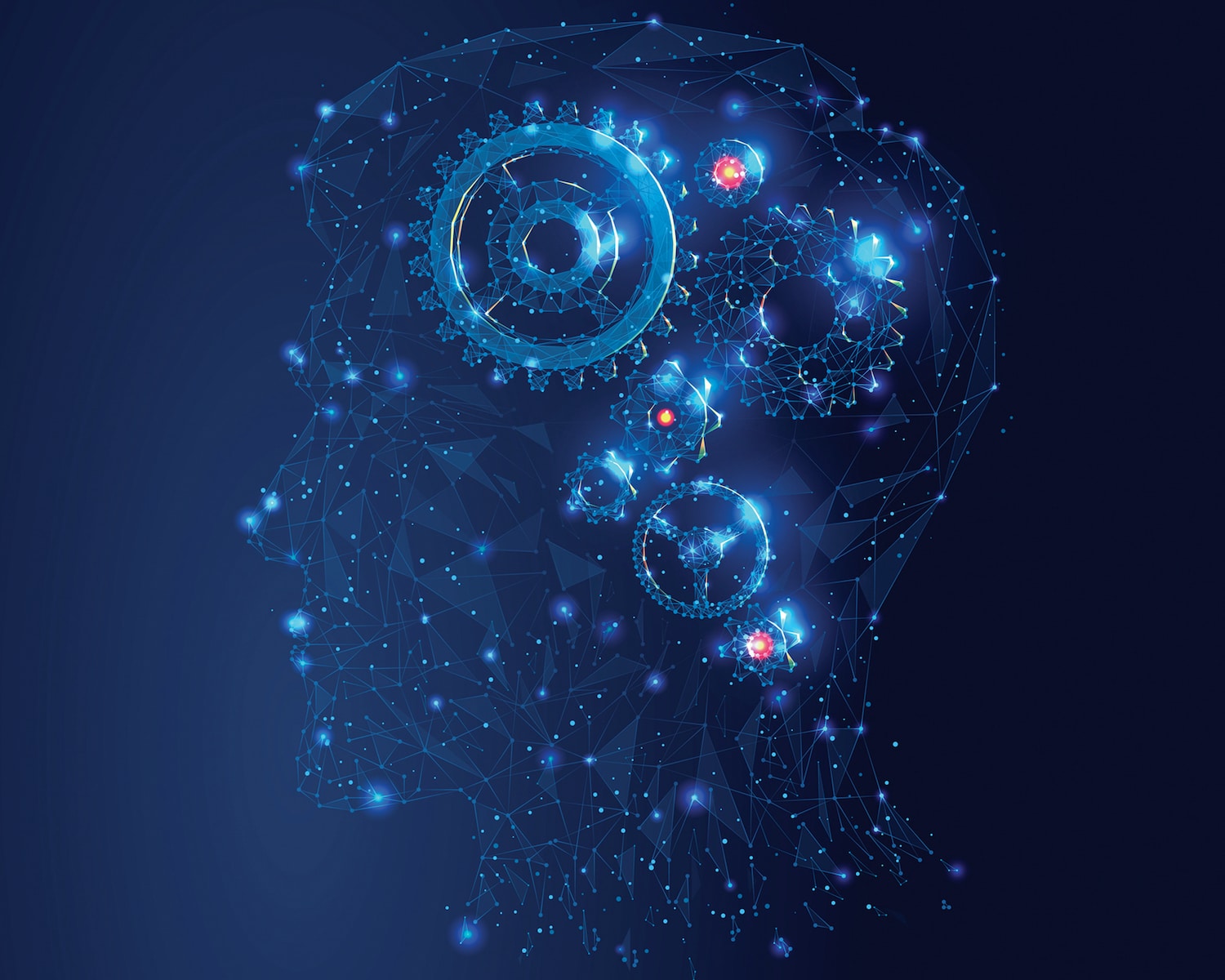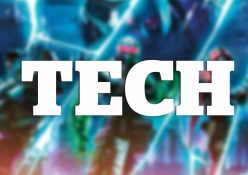At its most fundamental level, intelligence is often defined as a person’s ability to learn from an experience, understand their environment and complete tasks. In this article, we explore and compare human intelligence with animal intelligence.
Clever Critters
Octopus escape artists
Octopuses, of which there are around 300 species, are brainboxes with a talent for escaping. Unlike other mollusc species, octopuses have a centralised brain similar to a human’s.
However, only a third of its overall neurons can be found in its brain. The rest can be found in the octopus’ arms. Over the years, many octopuses in captivity have wreaked havoc on their keepers with their escapist antics.
In 2016, an octopus known as Inky sprung itself from a New Zealand enclosure, Finding Nemo-style, and into a 50-metre drainpipe leading to the ocean. Similarly, in Bermuda, an octopus confounded its handlers by repeatedly escaping its tank after hours to eat the crab inhabitants of the adjacent tanks before returning to its own.
Inky’s escape
Inky joined the National Aquarium in Napier in 2014 after a fisherman caught him in a net on Pania Reef.

1. Escape hatch: Thanks to his malleable body – the only hard part is the beak – Inky easily slipped through a small gap at the top of the tank, around two metres off the ground.
2. Eight-legged it: Inky then made a run for it along the aquarium floor for a further two to three metres.
3. Freedom: On the other side of the floor was the entrance to a drain pipe that led directly to the ocean.
4. Vanished: Inky did not return to the aquarium, leaving his fellow octopus tank mate Blotchy behind.
The Cleverest Animal On Earth

Dolphins have been recognised as the smartest non-humans on Earth. Bottlenose dolphins have the biggest dolphin brains – they average around 1 600 grams, compared to an average 1 400-gram human male brain. However, a dolphin’s Encephali-sation Quotient score is the second highest, surpassed only by humans.
One of the most remarkable aspects of this animal’s intelligence is self-awareness. Researchers at the Rockefeller University, New York, tested the capacity for mirror self-recognition in bottlenose dolphins to gauge this.
Using a temporary, non-toxic black ink marker, scientists either marked, pretended to mark or ignored their dolphin test subjects and placed mirrors in their swimming tank. What they discovered was that marked dolphins, and even those that thought they’d been marked, spent more time engaging in ‘self-directed’ behaviours in front of reflective surfaces.
The study findings suggest that the dolphins used the mirrors to investigate the markings on their bodies, and recognise themselves. Dolphins are not alone in their self-awareness. Elephants, orangutans and even ants can spot themselves in a mirror. However, combined with their big brains, a dolphin’s social and communication skills put them at the top of the class.
5 Animal tool users

1. Sea Otters
Floating on their backs, sea otters (Enhydra lutris) use stones as anvils on which they smash mussel shells to crack them open. They also use rocks to hammer abalone shells off rock surfaces.
2. Macaques
Although flossing is not usually the biggest concern among apes, researchers have found that some macaques use human hair as dental floss.
3. Orangutans
Keen instrumentalists, Bornean orangutans (Pongo pygmaeus wurmbii) gather leaves and twigs to form a musical instrument to alter their call and ward off predators.
4. Elephants
From fly-swatters to weaponry, elephants have found many uses for tree branches. Observations of African elephants revealed that they use heavy pieces of wood to lower fences to climb over them.
5. Shrikes
Fierce hunters, these cute, fluffy birds use thorns, sharp branches and even barbed wire to store their food. If they catch a mouse, snake or even another bird, shrikes impale them to create a macabre larder and feast over time.







